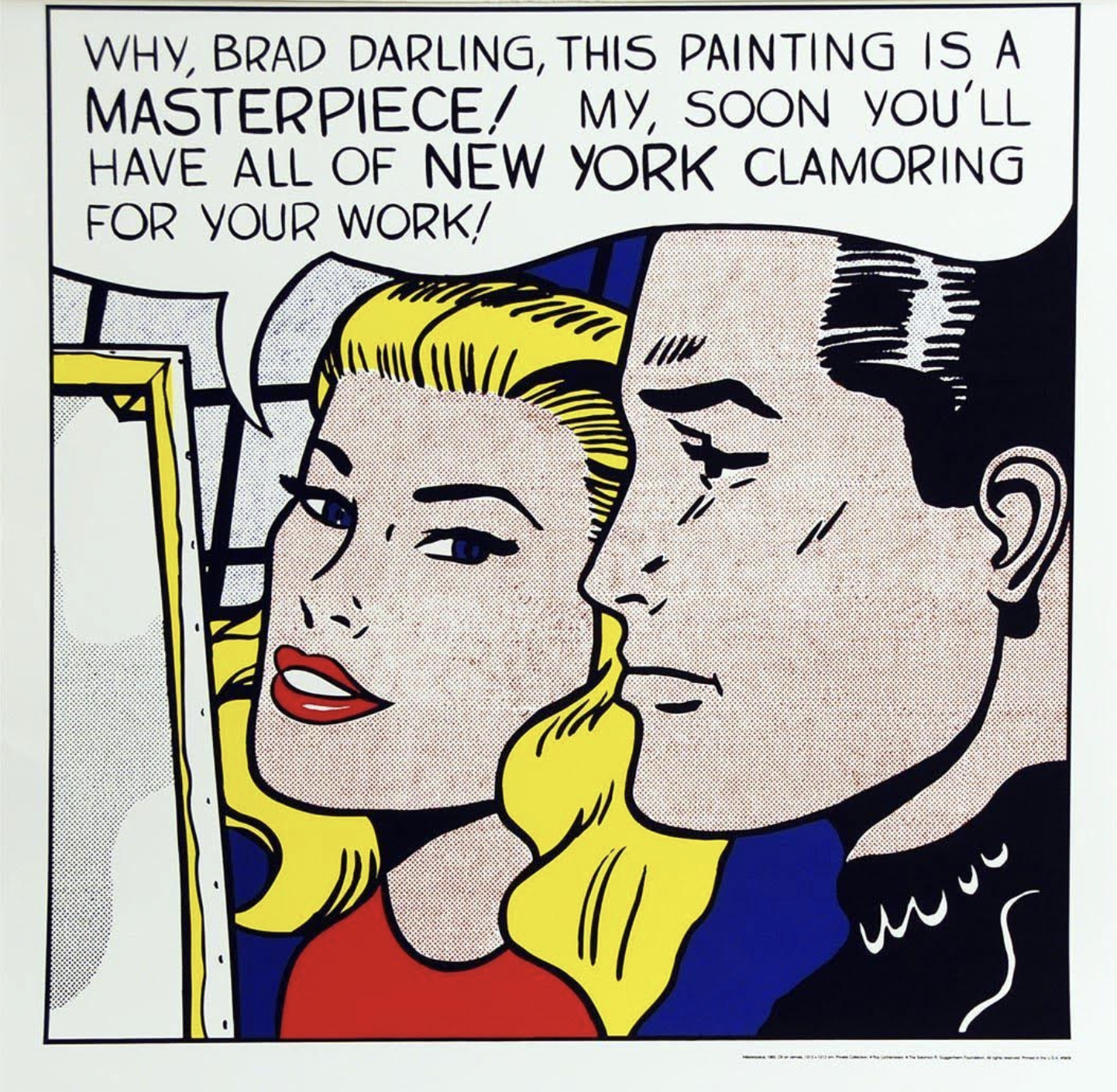By Claire Hines, Year 12
In 1961, Gallery owner Leo Castelli started exhibiting Roy Lichtenstein’s artwork, finally giving him a solo exhibition in 1962. The pieces put on display provoked a violent reaction from art critics and society alike, bringing Lichtenstein international renown. Though the reaction was big, it was far from all positive. LIFE Magazine even went so far as to refer to him as “the worst artist in America”. But what was so controversial about his artwork, and who was Roy Lichtenstein?
Roy Lichtenstein was a German of Jewish heritage, born in 1923 in New York, the same year Stalin came to power in Soviet Russia. He grew up in America in the interwar years, and from an early age showed an avid interest in science-fiction, aircraft, music, art exhibitions and drawing. In high school he started his own jazz band, and went on to study at Ohio State University in 1940 where he studied drawing and design. However, the outbreak of World War two interrupted his pursuit of knowledge, as he was drafted to the American infantry in 1943.
He finally left the army in 1946, and returned to his studies. He started painting in the contemporary style of abstract expressionism, developed by artists such as Pollock and Kline, which consisted of representing through surrealism an artist’s emotions with unrealistic forms from an unrealistic world. This artistic movement was developed immediately after World War two, and sought to express the intense feelings of the world and to escape dark reality. Roy Lichtenstein ended up rejecting this method entirely and started elaborating a new technique.
This new method of painting is what he exhibited in 1961-2 that got such a reaction from the public and the world of art. He had started using his renowned technique of Ben-Day dots inspired by the style of comic-strips, inside a carefully limited surface; but it was not the technique, but the subject of the paintings that aroused interest. He depicted mundane scenes and objects that seemed to have nothing to do with anyone’s emotions. Paintings such as The Kiss (1961), and The Refrigerator (1962), represented respectively an Airforce pilot kissing his girlfriend goodbye on the tarmac, a scene that reminded one of the recent world war, and of a maid cleaning out a refrigerator, an everyday event that seemed to have nothing to do with art. His work went against everything abstract expressionism stood for. People wanted to forget the war and their reality, not confront it. But Lichtenstein did not let criticism pull him down, far from it.
He pursued his artistic technique on canvas, murals, and even prints, releasing a series of artwork that both excited and bemused the public. Paintings like Drowning Girl (1963) and Sweet Dreams Baby (1966), each seemed to be telling a fragment of a story, but no one could quite piece them together. The order they were released in seemed random, in fact, the artist himself seemed to have little idea either, not that it really interested him: “I paint my own pictures upside down or sideways. I often don’t even remember what most of them are about… The subjects aren’t what hold my interest.”
The subjects of his paintings were mainly scenes from everyday life like Step on Can with Leg (1961), combat scenes such as WHAAM! (1963), and of girls such as Girl with Hair Ribbon (1965). His work was often accused of being undisguised plagiarism as he often took a painting, cartoon, or advertisement and then transformed it in his own style. In his later years he stopped using human figures as he dedicated himself entirely to artistic technique and painted still life’s, landscapes, and dabbled in sculpture. He died at 73 in September 1997.
Lichtenstein’s revolutionary work started the artistic movement of “Pop Art”, or popular art that consisted in depicting contemporary, popular scenes in a new light. Recognised as the father of pop art, his work has given him worldwide repute, and a substantial legacy of over 5000 paintings, sculptures, murals, prints and drawings that are still popular today.



